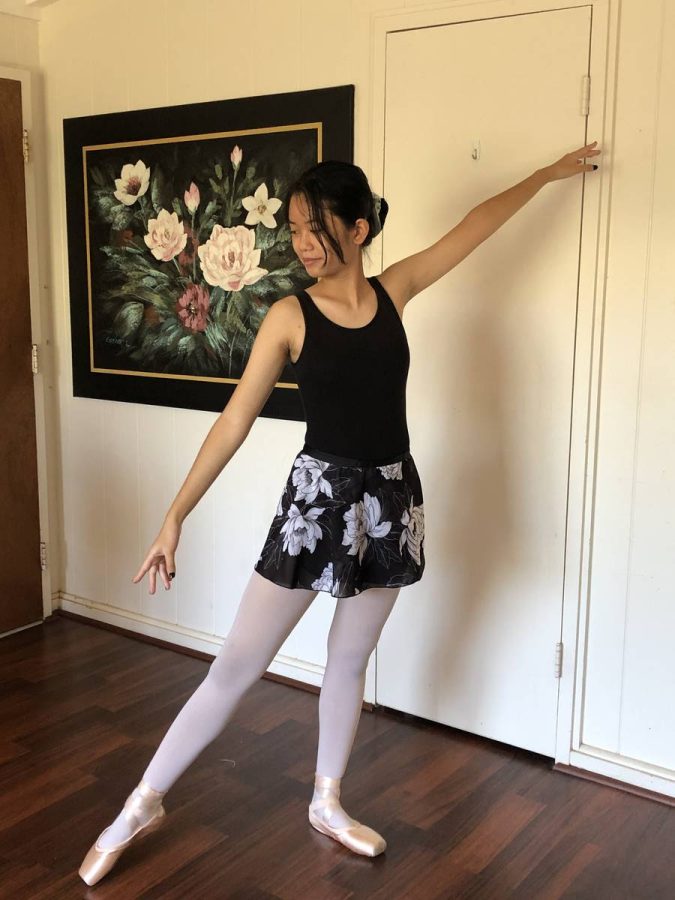Ballet is a study in strength and grace, but ultimately, performance
October 17, 2022
For about eight years, I’ve been involved in dance. I take tap, ballet, and hip hop classes. My favorite of the three is ballet. The movements are more flowing and graceful, as opposed to the quick and hard-hitting dances in hip hop. I also feel like it matches my personality better.
In my opinion, I wouldn’t consider ballet a sport because it’s not an activity where you’d normally be competing with other people. Instead, it would fall under the Performing Arts category, like band, orchestra, and choir. But unlike those activities, ballet requires a lot of stamina, athletism, and physical training, similar to a sport.
Learning the fundamentals of ballet can be helpful for other things as well. Following the tempo and rhythm of a dance will be useful when playing an instrument. Memorizing choreography will help you learn formations for marching band. In fact, even football players have taken ballet classes to improve their agility and coordination on the field.
My favorite ballerina is Misty Copeland. She’s an incredibly talented dancer, and made history by being the first black woman to become a principal dancer in the American Ballet Theater. She was naturally gifted, but worked really hard as well. Although she was often looked down upon for her skin color and body type, she would go on to be a prestigious soloist due to her exceptional skill. I think she’s really amazing for always working toward her goals, persisting in the face of discrimination and injuries.
One of the ballet skills I’m currently working on is pirrouttes. It’s one of the most common ballet turns, but they’re pretty difficult for me because you have to be aware of a dozen different things. Before you even start turning, you have to make sure your form is good. Straight legs, correct arm position, turnout, pointed feet, high relevé, and balance are crucial for pirouettes. Then, when you’re turning you have to generate enough force with your arm movement and legs pushing off from the ground to rotate in a full circle, while still maintaining a good form. You also have to spot, which is continuously looking to the front, so your head doesn’t rotate with the rest of your body. Every part of your body has to be positioned perfectly, or else you end up sort of like a spinning tornado.
Typically, the studio will take a couple pieces from a movie and edit them together. In previous performances, I’ve had dances to the soundtracks for Wonderland, Ice Age, Frozen, Anastasia, and Tangled. Movie soundtracks are always my favorite for performances. The opening music is grand and powerful, starting off strong. Then it gets more lighthearted, usually done with quick jumps and leaps. After that, the music softens, almost somberly, and the movements are more flowing and elegant. Lastly, the music climbs back up to a dramatic finale and the dancers end with a bow.
Performing is about as fun as it is stressful. On one hand, it’s everything you’ve been working toward for the past six months as all the hours of practice finally pays off. But at the same time, it’s terrifying performing in front of so many people and you are constantly worrying about messing up in front of everyone. But I’m glad that I’ve gotten the opportunity to perform on some amazing stages in front of my family and friends.

